Key takeaways
- The Education Reform Act in Louisiana emphasized school choice, accountability, and the integration of technology, reshaping the educational landscape.
- It sparked passionate community debates on educational options, revealing deep divisions between supporters of charter schools and traditional public schools.
- Challenges during implementation included resource disparities and pressures from standardized testing, affecting educators’ ability to foster a love for learning.
- Key lessons included the importance of community engagement, the complexity of accountability in education, and the responsibility that comes with school choice.
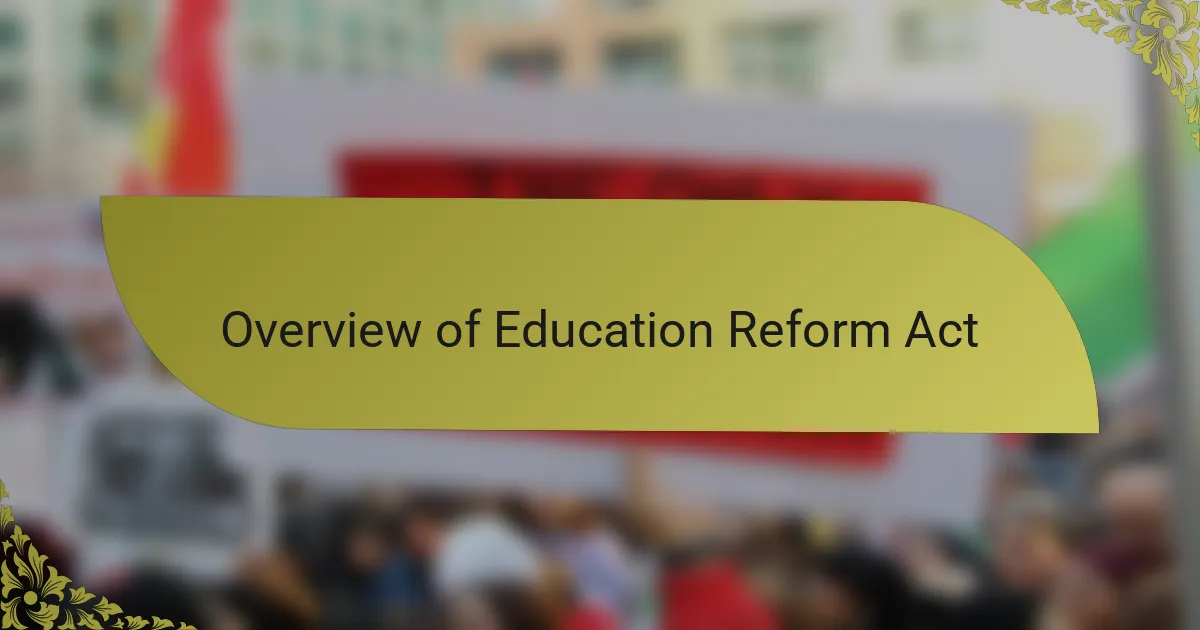
Overview of Education Reform Act
The Education Reform Act drastically transformed the educational landscape in Louisiana. I remember the excitement and skepticism that filled the air when the changes were announced. As schools began to implement reforms, I witnessed firsthand how the focus shifted to improving student outcomes, accountability, and the integration of technology in classrooms.
Key elements of the Education Reform Act include:
- Increased funding for under-resourced schools.
- Implementation of standardized testing to assess student performance.
- Introduction of charter schools, fostering choice and competition.
- Teacher evaluations tied to student performance metrics.
- Expansion of early childhood education programs.
Each of these points not only highlights the breadth of the reforms but also reflects the enthusiasm and challenges that educators, students, and families faced along the way. It’s a journey that’s both inspiring and, at times, overwhelming.

Impact on Louisiana Politics
The Education Reform Act has significantly reshaped the political landscape in Louisiana. I remember attending a local school board meeting where passionate educators and parents debated the implications of the reform. It was evident how deeply divided opinions were, with some praising the changes for providing more choices and others fearing they would undermine public schools. The classroom dynamics started shifting, and suddenly political discussions expanded beyond the usual suspects; everyone was weighing in on education policies that felt personal and impactful.
As I engaged with various community members, I witnessed their genuine commitment to the cause. The conversations often revolved around the following key points:
- Increased funding for charter schools, creating competition for traditional public schools.
- A growing emphasis on standardized testing, which sparked debates about teaching methods.
- Legislative efforts to decentralize control over schools, empowering local communities but also leading to inconsistencies.
- Greater parental involvement in school choice discussions, showcasing a shift in political activism.
- Emerging alliances between unusual partners, including business leaders and education advocates, aiming for systemic change.
These discussions, rich with emotion and urgency, mirrored the complexity of Louisiana’s evolving educational and political landscape.
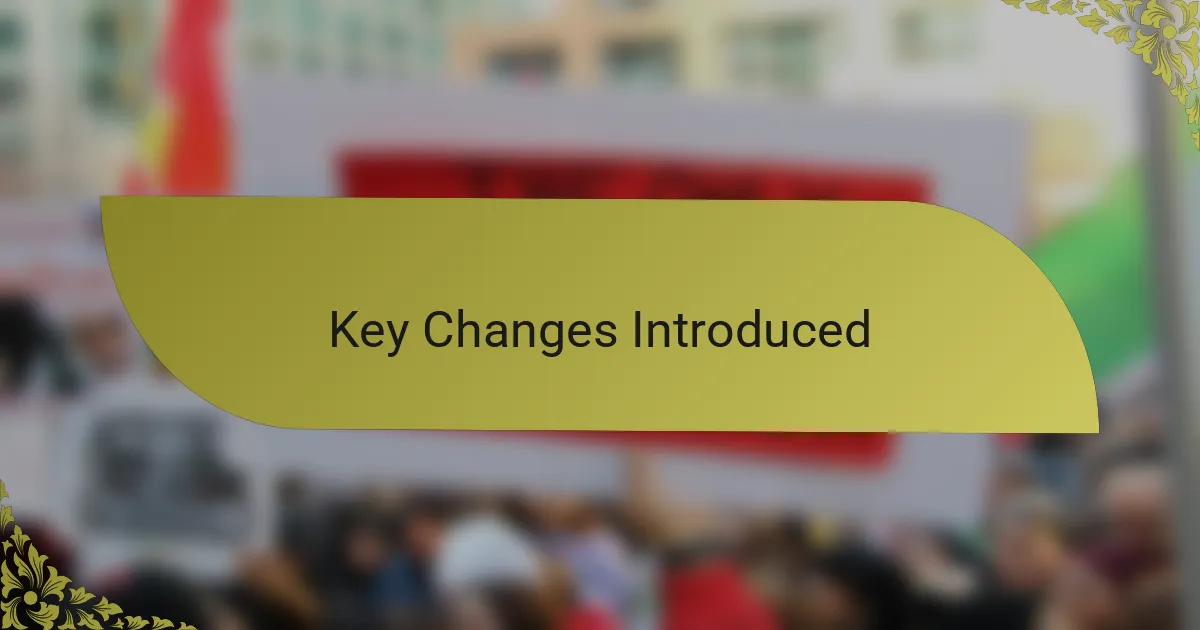
Key Changes Introduced
One of the most significant changes introduced by the Education Reform Act was the shift towards school choice, which aimed to give parents more control over their children’s education. I remember the excitement and anxiety in our community as we discussed the new options available. Suddenly, families could choose from public, charter, or private schools, which sparked debates around quality and accessibility that still resonate today.
This act also emphasized accountability for schools and teachers, linking funding to performance metrics. Reflecting on my own experience, I saw how passionate educators felt an added pressure to meet these benchmarks, which sometimes clouded their love for teaching. Here are some of the key changes I’ve seen:
- Introduction of school vouchers to enable families to select educational options outside their local public schools.
- Expansion of charter schools, allowing for innovative teaching methods and diverse learning environments.
- Implementation of standardized testing as a measure of student and teacher performance, aligning funding with outcomes.
- Increased focus on parental involvement and community engagement in schools, recognizing the role of families in education.
These changes were not just policies; they transformed the educational landscape and, ultimately, our children’s futures.
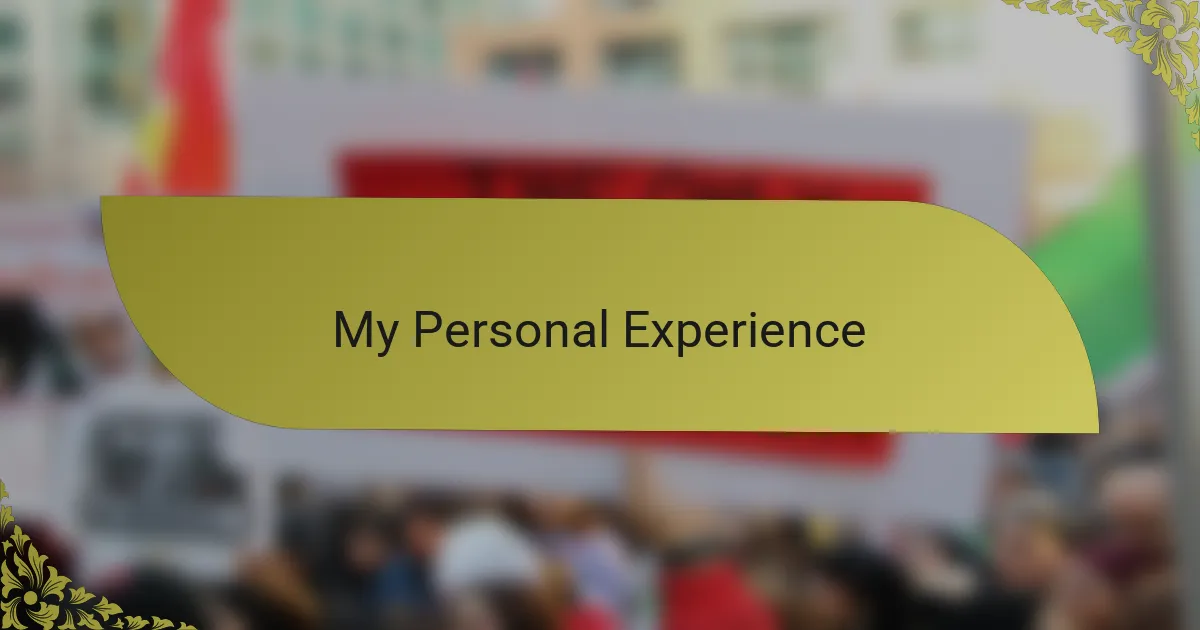
My Personal Experience
As I navigated the implications of the Education Reform Act in my community, the experience was both exhilarating and daunting. I vividly remember sitting in our living room, discussing school options with friends and family, wondering how these choices would impact our children’s futures. It made me think: were we truly ready for such a shift? Watching families weigh their options made it clear that this reform created a sense of hope, albeit mixed with uncertainty.
One day, I attended a community forum where a passionate debate broke out over the merits of charter schools versus traditional public schools. The emotions in the room were palpable; some parents were excited about the potential for innovation, while others expressed concern about losing the sense of community that public schools fostered. I couldn’t help but reflect on my own educational journey and how much those relationships meant to me. It was eye-opening to see how personal education choices became in our tight-knit community.
Additionally, I noticed a marked increase in parents stepping into advocacy roles, demanding their voices be heard in the decision-making process. I recall a neighbor who had never engaged in school politics before becoming an outspoken supporter of school vouchers. It was inspiring to witness this transformation. Did the reforms truly empower families, or were they creating new divides? In my experience, the answer was layered and multifaceted, painting a complex picture of change that left no one unaffected.
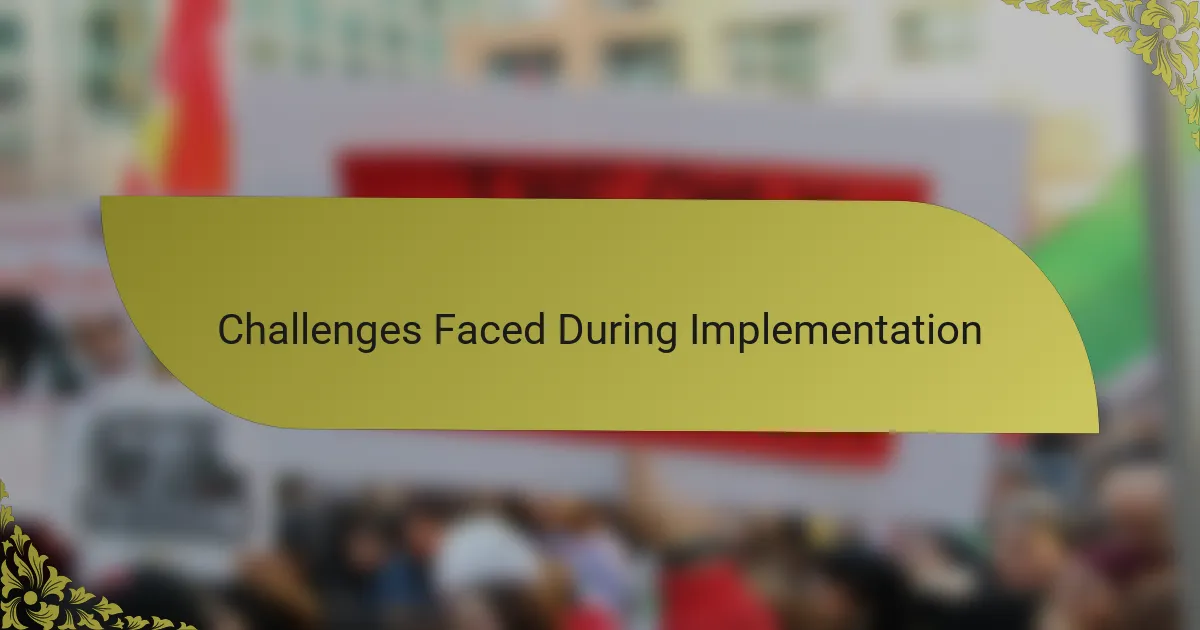
Challenges Faced During Implementation
As the Education Reform Act began to take hold, numerous challenges emerged during the implementation process. One significant hurdle was the disparity in resources among schools, which often led to unequal opportunities for students. I remember visiting a charter school that thrived with abundant funding, while just a few miles away, a public school struggled with outdated materials. How could we expect fair assessments of student performance when the playing field was so uneven?
Moreover, the rollout of standardized testing left many educators feeling overwhelmed. They faced intense pressure to prepare students for assessments that would, in many cases, determine funding and support for their schools. I can recall a conversation with a teacher who felt torn between teaching creatively and focusing on test preparation. This tension illustrates a broader issue: how do we balance accountability with the genuine goal of fostering a love for learning?
Finally, the introduction of charter schools created confusion and division within our community. Parents were left grappling with choices that felt both empowering and daunting. I vividly recall discussing the pros and cons of various educational paths with fellow parents, each of us passionate yet uncertain. Were we setting our kids up for success or simply complicating an already challenging system? These questions lingered in my mind as I navigated this new educational landscape, reminding me that reform is rarely a straightforward journey.
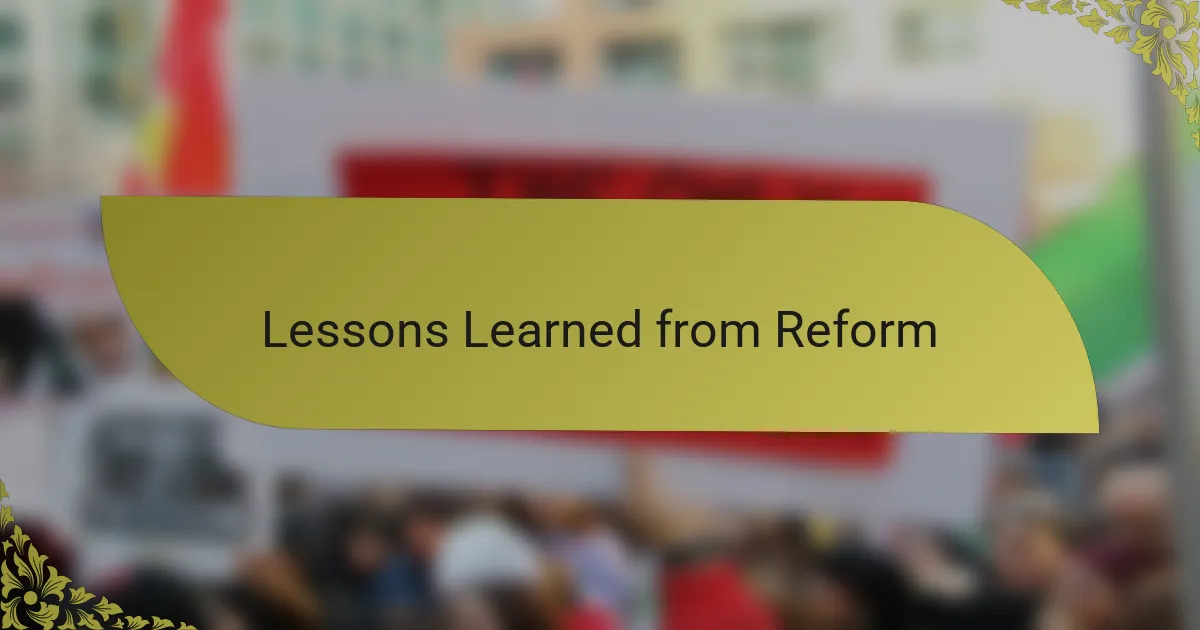
Lessons Learned from Reform
The lessons learned from the Education Reform Act were as profound as they were varied. One major takeaway for me was the realization of how vital community engagement is. I saw firsthand how parents rallied together, forming groups to advocate for their educational choices. This network of support not only amplified their voices but also fostered a sense of unity in pursuit of quality education. Have you ever witnessed such passion in your community? It’s truly inspiring to see individuals rise to the occasion when they feel empowered to influence positive change.
Another important lesson revolves around the complexities of accountability. I often reflected on conversations with teachers who felt caught in a tug-of-war between meeting performance metrics and nurturing their students’ love for learning. It made me wonder: can we truly assess educational success solely through standardized tests? The heart of teaching is about connection and inspiration, yet the pressure to deliver results sometimes overshadowed that essence.
Finally, I learned that with choice comes responsibility. Choosing a school for my child felt daunting. Each option had its unique charm, but it also carried the weight of expectations and potential outcomes. Were we making the right decision? I remember a moment of clarity when I realized that the value of these choices lies not just in competition but also in recognizing and addressing the needs of all students in our community. This awareness is crucial as we navigate the ever-evolving educational landscape.